This extended article discusses the extent to which views on race affected the fighting capacity and effectiveness of the American Army during World War One. It argues somewhat controversially that the contemporary racist views of white Americans had little effect on the fighting ability of the army.
American experiences during the First World War were limited by their late entry in to the war; their contributions came on a weakened enemy that was on the back foot. Nonetheless views upon race played an important role in how the United States fought; it can be seen at the tactical, operational and strategic levels. The natural discourse for a western liberal would be to assume that this would have a profoundly negative impact on the effectiveness of an army. Yet when one looks at the combat effectiveness of the racially segregated troops there appears to be little difference. This poses the question as to how far did racist views impact on how well troops of different ethnicity fought?
Part of the reason why race is perceived as to have a significant view upon how the blacks fought and therefore how America as a whole fought is due to the obscuring of the truth. The successes of black soldiers were side-lined, whilst their failures were highlighted. This has led to a discourse that ascribes race as a significant factor in its impact upon fighting. This article will focus upon the relationship between white and black Americans both at home and abroad. It will consider how white views impacted upon the tactical, operational and strategic use of black troops.
David Kennedy asserts that the majority of white Americans were loathsome of blacks “The average white person…whether buck private or general, didn’t want Negro soldiers.” The strength of this sentiment meant that the American army would remain rigidly segregated along racial lines. David Levering Lewis points to a quote by W.E.B Du Bois that articulates the problem this caused; “The racial distinctions… present a formidable barrier to the existence of that feeling of comradeship which is essential to mutual confidence and esprit de corps.”
At the tactical level this attitude hindered black troops because they were predominantly led by officers who were “disproportionately recruited from white southerners.” The fighting effectiveness at the tactical level was further compounded by the poor training black troops were given. An example of this was the lack of arrangements to train the all-black Ninety-Second division together; rather they were trained at seven widely separated camps. Moreover, they were not trained how to use artillery or machine guns on the premise that they were beyond the mental capabilities of blacks. Mistakes like this demonstrate the incompetence American leadership showed in dealing with the ‘black problem’.
W.E.B Du Bois could not decide whether the leadership were simply racists, incompetent, or both. He points to how the Ninety-Second’s black officer numbers dropped from 82 to 58 per-cent as they were “battered by a hailstorm of arbitrary transfers and courts-marshal.” This led him to the conclusion that American officers fought more valiantly against Negroes that they did against the Germans.” This may sound extreme but there is some reasoning that some whites disliked blacks far more than they disliked German militarism. To put as much effort in to fighting their own establishment rather than the enemy would surely have had a detrimental effect.
American leadership’s issues with balancing the need for black troops whilst also having to placate white people’s issues with the raising of these troops impacted on American operational and strategic planning. A prime example of this can be seen with the case of the Fifteenth New York Infantry at Spartanburg. John Hope Franklin and Alfred A. Moss, JR have outlined the options and their consequences available to the War Department after conflict broke out between black soldiers and white civilians in the area:
It could keep the regiment at Camp Wadsworth and face a violent eruption; it could remove the regiment to another camp, thereby conveying the impression that any community that exerted sufficient pressure could force the War Department to remove undesirable soldiers from their midst; or it could order the regiment overseas.
The decision was taken to send them overseas. From this we can see how conflicts about race gave American leadership problems that could have strategic impacts at home and therefore also abroad. The decision to send the regiment overseas calmed white fears, but must have tempted many blacks to believe that “the penalty for insisting upon full equality in the United States was a sentence to face, for a full season, the onslaught of German armies”
Another way that views on race at home influenced American prosecution of the war can be seen in the issues surrounding lynching. Ernest Allen, Jr describes the how these attacks caused disaffection and outcry from Afro-American communities;
Black public outcry against lynching, bordering on what some authorities considered to be “unpatriotic” expression in a time of war… which might well hinder prosecution of U.S. war aims overseas… the Afro-American press was nevertheless quite given to providing front-page coverage to these almost daily atrocities committed against black such stories.
The consequence of this was that the leadership “recognized that a rapid deterioration of race relations could harm civilian and military morale and that special measures to avoid deterioration might be needed.” In the end it forced President Wilson in to making a strong statement against Lynching and mob violence. The fact that it this reached the level of the president shows how important an issue it was becoming and how it could affect the prosecution of the war.
To accuse race of being the main determinant of American strategy is to fall in to the lure of cultural determinism. Race evidently played a role, however, to assert that its role was fundamental to how America fought ignores the elements of realism within American leadership. Several points will be discussed to counter the culturally determinist approach; the directing of resources to the best suited place, the involvement of blacks in nearly all aspects of the army, and their role on the home front. However, as will be shown despite these realist tendencies race influenced the American army even when it was trying to be somewhat ‘colour-blind’
White Southerners strongly opposed the presence of Black regiments training in their regions, this sometimes boiled over in to violence, as already seen with the Spartanburg incident. Yet whilst in that case the government appeared to bend to White Southerners pressure, there was an element of realism within the army that realised that it would be necessary to have black soldiers in the South. According to Franklin and Moss “blacks were being sent to the camp, North or South, that best served the interests of the prosecution of the war.” Thus the notion that American leadership was blinded by their racial ideology is undercut by the pragmatism that can be seen in some of their decision making. Nonetheless, the very fact that issues like this had to be dealt with shows how the racialist views distracted the authorities from focusing on pure military matters in order to deal with politico-racial issues, Franklin and Moss agree,

Henry Johnson, the first African American to be awarded the Croix de Guerre by the French, in WW I. He has also been posthumously nominated for the Medal of Honor.
“This arrangement worked such a hardship upon the administration of the army’s program…”
A related point that has suggested is that despite their segregation black soldiers served in almost every branch of the army, from cavalry to chaplains to labour battalions. In whatever branch they were placed they were effective. The most decorated of these were these were those who served under the French, who desperate for manpower pounced upon them. The 369th United States Infantry spent 191 days in the trenches and earned the name “Hell Fighters” by the Germans. In addition the entire regiment was awarded the Croix de Guerre for their efforts at Maison-en-Champagne.
Heroic actions tended to be overlooked by the military establishment, who sought to praise white soldiers and highlight black failures. This was despite the many failings of American White troops, Kennedy describes how “American gunners were ill-trained to provide the close support of a creeping barrage, and hence tended to favour long-range fire of dubious effect. Loose discipline further hampered the American attack, as small bodies of troops scattered themselves about, under no apparent control.”
Two opposing hypothesis are possible; it could imply that the black troops fought better under the French because they were more accommodating and tolerant of them. It could alternatively demonstrate the superiority of French organization and leadership in ensuring that their troops fought more efficiently, due to their greater experience. Perhaps most probable is that it was a combination of both, improved morale and better leadership would likely cause any unit to fight better. By looking at how black troops fought when divorced from the main body of the American army it is possible to see how views on race combined with ineptitude affected how well the American army could fight.
Regardless of their views, the White leaders realised how important the black workforce were in providing the resources necessary for war. The mass migration of Afro-Americans from the south to industrial centres in the north meant that it was necessary for more conciliatory tones to be made by the leadership to ensure that the industrial effort did not falter. To help ensure this Emmett J. Scott was employed as a special assistant for Negro affairs. His employment demonstrates how the White authorities recognised that some concessions would be necessary in order to prevent mass dissent in black communities. This is further affirmed through the close liaising between W.E.B Du Bois and Joel Elias Spingarn, Mark Ellis has argued that it was the relationship between these two that led to one of Du Bois most famous pieces “Close Ranks” which calls for black people to support the war “Let us, while this war lasts, forget our special grievances and close our ranks shoulder to shoulder with our own white fellow citizens and the allied nations that are fighting for democracy…” A cynic might suggest that the closeness of their relationship and his progressive ideals were to lead to him “being stripped of domestic duties and assigned once again to the theatre of war.” Evidently, the authorities would only let realism on a short leash; ideology played a significant role in conditioning their thinking.
In summary it appears that race shaped America’s prosecution of the war in ways that were detrimental at the tactical, operational and strategic levels. At the tactical and operational levels came issues of how and where to train black soldiers. At the strategic level was how to employ these troops, which was compounded by issues with where and what their training was. To argue that race was the main factor in determining American strategy is misguided, general incompetence due to lack of training, experience and failure to listen to their allies lay at the core of the issue. The reason for this is that the history of the America’s actions during World War One is littered with examples of incompetence and failures, when discussing American success at Saint-Mihiel one French officer commented “[T]he most unfortunate part of an otherwise successful operation…was that it confirmed the American High Command in an exaggerated estimate of the efficiency of the American military machine—and of their ability to control it.” White soldiers were no better than their black counterparts. Thus trying to discern how race effected the prosecution of the war becomes more difficult. If white officers were as incompetent with white troops as they were with the blacks they disliked, it suggests that it was not their views on their racial superiority that led to the Americans fighting the war as they did but rather other factors.
Some Further Reading
J. Franklin & A. Moss, From Slavery to Freedom: A History of African Americans.
D. Kennedy, Over Here: The First World War and American Society.
D. Lewis, W.E.B Du Bois: A Biography of a Race: 1868 – 1919.
J. Ross, J. E. Springarn and the Rise of the NAACP, 1911-1939.
E. Allen, “Close Ranks”: Major Joel E. Spingarn and the Tow Soul of Dr W.E.B Du Bois,
M. Ellis, “Closing Ranks” and “Seeking Honors”: W. E. B. Du Bois in World War I.
W.E.B Du Bois, Close ranks, http://www.udel.edu/History/suisman/206_08-Fall/Online-readings/dubois.pdf

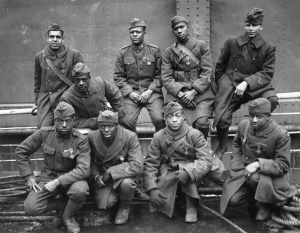
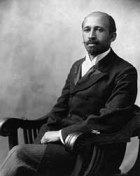
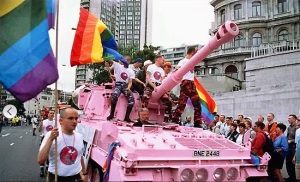
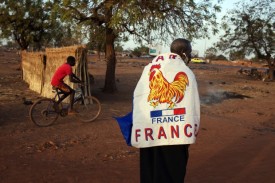


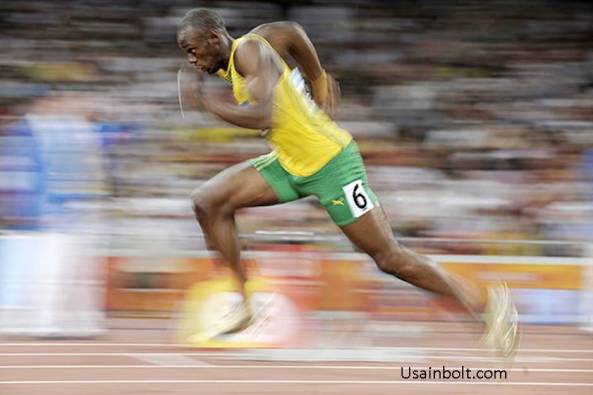 Akin to…
Akin to… Akin to…
Akin to… Akin to…
Akin to… Akin to…
Akin to… Akin to…
Akin to… Akin to…
Akin to… Akin to…
Akin to… Akin to…
Akin to… Akin to…
Akin to…


